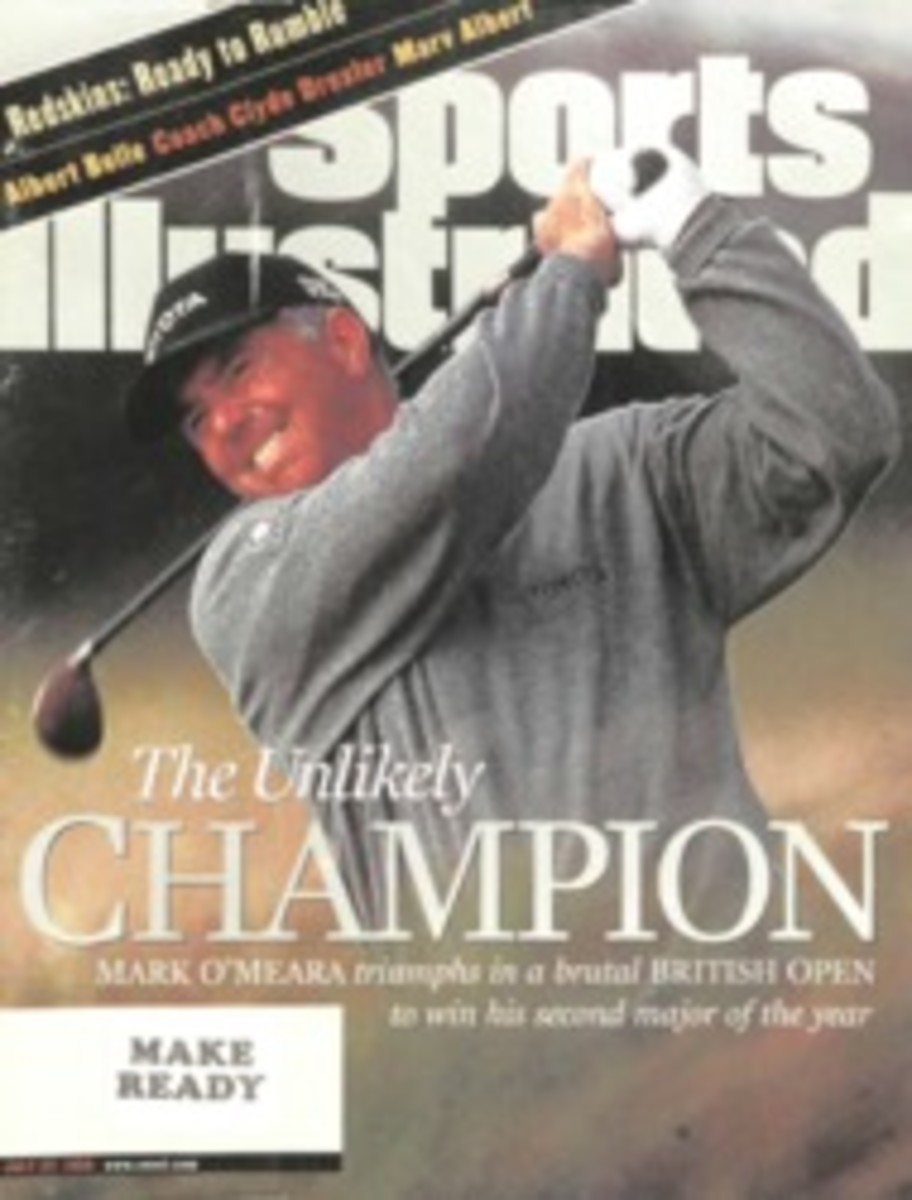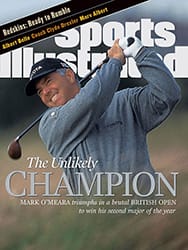
He Could Always Move Merchandise When the NFL wanted to start selling trinkets, Roy Rogers was its man
The easiest way to show love for your team is to buy its
official logo T-shirt. Or baby bib. Or key chain, chips bowl,
coffee cup or athletic sock, or one of the thousands of other
products plastered with pro team logos. Sports licensing is a
multibillion-dollar business that grows bigger every year. But
it wasn't always so. Go back 40 years, to the first effort, by
the National Football League, to sell a team image on a national
scale. There, smiling and squinting and patting the side of his
trusty palomino, is the unexpected figure of Roy Rogers.
Yes, Roy Rogers, the King of the Cowboys, who died on July 6 at
the age of 86, was the midwife of national sports team
marketing. When the original NFL Enterprises--now called NFL
Properties, the division of the NFL that licenses team
logos--was created in 1959, it was a division of Roy Rogers
Enterprises. Happy trails, indeed. Before Rogers rode into town,
each of the 12 NFL teams took care of its own licensing, what
little there was. Some teams even gave away their rights,
thinking the team was getting free publicity.
In 1958 the Los Angeles Rams, the first team to put its logo on
the side of its helmets, started selling a bobble-head doll of a
Rams player. The doll was a hit. "This is the first we can
identify of team logos being applied to a product," says Roger
Atkin, who recently retired as vice president of retail sales at
NFL Properties.
That success did not go unnoticed by Rogers, a genius marketer.
His TV show, which aired from 1951 to '57, was one of the most
popular of the decade. At the peak of his fame, 400 Roy Rogers
products were on sale. The 1955 Sears catalogue offered 13 pages
of Roy Rogers gear--cowboy outfits, lunch boxes, flashlights,
hats, slippers, watches, even an inflatable Trigger.
Rogers's earnings from his licensing agreements dwarfed his
salary as a cowboy star, and after his show went off the air, he
couldn't see himself returning to the grind of making movies.
"He just decided he didn't want to make any more films," says
Larry Kent, 85, who was general manager of Roy Rogers
Enterprises. With the notion that pro teams could tap into the
same market as cowboy stars, Rogers approached Major League
Baseball, which took a pass. The NFL didn't. Talks began,
spearheaded by Pete Rozelle, then the dynamic young general
manager of the Rams.
In March 1959, Rogers offered to build a national licensing
program for the league, and late that year the NFL signed a
two-year contract with him to do all its marketing and
licensing. Rogers got half the royalties, and the 12 team owners
got the other half.
The first team memorabilia sold nationally was a set of
glassware carrying team logos. Standard Oil bought it to give
away with fill-ups at its gas stations. "Up to that point nobody
had done anything nationally," says Kent. "From then on the
thing took off. When adults started identifying with teams, it
grew into a gigantic business. They bought everything."
Within a year Rogers had lined up 45 manufacturers, churning out
about 300 NFL products--cigarette lighters, dolls, vacuum
bottles, ties, blankets, coats, pajamas and more. The strange
marriage between branding iron and gridiron, however, didn't
last. When the contract came up for renewal in 1962, Kent leaped
from Roy Rogers Enterprises to the burgeoning NFL.
"The business got stolen away from him," Roy Rogers Jr. says of
his father. "It was always a sore issue with him. Larry Kent
took the program with him."
Kent, who ran NFL Properties until 1971, says today that Rogers
quickly lost interest in the football business, though he
credits the cowboy star as the dynamo who got the ball rolling.
"He was a force," says Kent. Still, the question remains as to
who first thought to market sports merchandise nationwide. "It
was my idea," Kent says.
The Rogers camp doesn't object. "Dad would have been the first
to tell you that he never got off the horse," says Roy Jr. "He
had good people running his industry."
That might be unfair to Rogers, known as a savvy executive who
parlayed bit parts in B-movie Westerns into an image worth
millions. In 1960 a newspaper reporter asked why a TV cowboy was
handling marketing for the NFL. Rogers's answer must have seemed
radical then: "Merchandising is merchandising. There's no
difference, whether a store is selling a Roy Rogers revolver or
a junior St. Louis Cardinal football outfit just like the pros
wear."
The NFL turned its business over to him, he said, because he had
"the merchandising setup, the organization." Besides, Rogers
added, what do NFL team owners know about business? "What they
were primarily interested in was winning football games," he
said, showing that some things do indeed change.
Neil Steinberg is a columnist for the Chicago Sun-Times. This is
his first story for SI.
B/W PHOTO: BEN CARBONETTO COLLECTION Rogers's earnings from his licensing agreements dwarfed his salary as a cowboy star. [Roy Rogers with horse Trigger]

